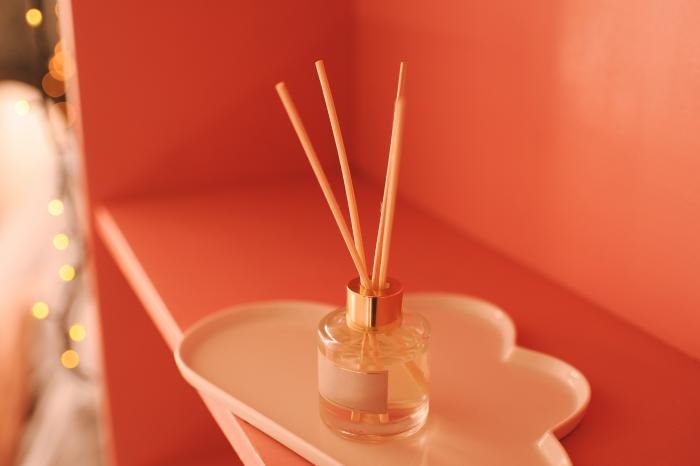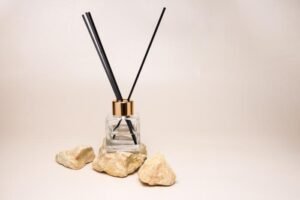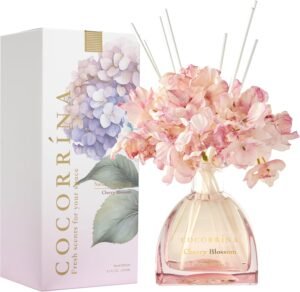Znalezienie niezawodnych producentów zapachów do domu wydaje się przytłaczające, gdy reputacja marki zależy od stałej jakości i terminowości dostaw.
Rynek zapachów do domu wymaga wyrafinowanych strategii zaopatrzenia, które równoważą standardy jakości, wymagania zgodności z IFRA i elastyczne partnerstwa produkcyjne. Nabywcy B2B muszą oceniać dostawców OEM w oparciu o możliwości produkcyjne, zgodność z przepisami i skalowalność, aby budować udane długoterminowe relacje.

Pozwól, że przeprowadzę Cię przez podstawowe kryteria, które odróżniają wyjątkowych partnerów produkcyjnych od nierzetelnych dostawców.
Jakie kluczowe kryteria należy wziąć pod uwagę w przypadku producentów zapachów do domu?
Wybór niewłaściwego producenta może uszczuplić budżet, opóźnić wprowadzenie produktu na rynek i zaszkodzić reputacji marki.
Ocena producentów zapachów do domu wymaga oceny zdolności produkcyjnych, systemów kontroli jakości, możliwości produkcyjnych, weryfikacji certyfikacji, wiedzy technicznej i elastycznych niskich wymagań MOQ, aby zapewnić niezawodne partnerstwo i sukces rynkowy.
Zdolności produkcyjne i możliwości wytwarzania
Zdolność produkcyjna określa, czy producent może skalować się wraz z rozwojem Twojej firmy. Oceń ich obecne poziomy produkcji, możliwości sprzętowe i zdolność do radzenia sobie z sezonowymi wahaniami popytu. Poszukaj producentów z elastycznymi liniami produkcyjnymi, które mogą pomieścić zarówno małe partie testowe, jak i zamówienia na dużą skalę.
Wiedza techniczna odróżnia liderów branży od podstawowych dostawców. Oceń ich możliwości formułowania, wiedzę na temat mieszania zapachów i zrozumienie optymalizacji zapachu. Najlepsi producenci zatrudniają doświadczonych perfumiarzy i chemików, którzy potrafią przełożyć Twoją wizję na produkty gotowe do wprowadzenia na rynek. Weź pod uwagę ich zdolność do pracy z różnymi systemami dostarczania zapachów, od tradycyjnych świec po dyfuzory trzcinowe i elektryczne.
Standardy kontroli jakości i certyfikacji
Rygorystyczna kontrola jakości zapewnia stałą wydajność produktu i zgodność z przepisami. Sprawdź ich protokoły testowe pod kątem stężenia zapachu, wydajności spalania i parametrów bezpieczeństwa. Najlepsi producenci prowadzą kompleksową dokumentację przez cały proces produkcji.
| Niezbędne certyfikaty | Cel | Znaczenie dla branży |
|---|---|---|
| Zgodność z IFRA | Standardy bezpieczeństwa zapachów | Wymagane do uzyskania dostępu do rynku |
| ISO 9001 | Systemy zarządzania jakością | Zapewnia spójność procesów |
| Certyfikat CPSC | Bezpieczeństwo produktów konsumenckich | Obowiązkowe dla rynku amerykańskiego |
| Oznakowanie CE UE | Zgodność europejska | Wymagane do dystrybucji w UE |
Weryfikacja certyfikatów powinna obejmować sprawdzenie dat ważności i zakresu. Loveeno utrzymuje wszystkie główne certyfikaty branżowe, oferując jednocześnie konkurencyjne opcje niskiego MOQ, dzięki czemu jakość jest dostępna zarówno dla wschodzących marek, jak i firm o ugruntowanej pozycji.
Jak zgodność z przepisami wpływa na współpracę w zakresie produkcji zapachów do domu?
Wybór niewłaściwego partnera produkcyjnego może narazić markę na kosztowne kwestie prawne i wycofanie produktu z rynku.
Zgodność z przepisami ma bezpośredni wpływ na bezpieczeństwo produktów, dostęp do rynku i długoterminową rentowność partnerstwa. Partnerzy produkcyjni muszą wykazać zgodność z IFRA, utrzymywać odpowiednie wymagania certyfikacyjne i przestrzegać globalnych przepisów, aby zapewnić, że produkty spełniają międzynarodowe standardy w bezpieczny sposób.

Zrozumienie standardów zgodności IFRA
Zgodność z IFRA stanowi podstawę bezpiecznej produkcji zapachów na całym świecie. International Fragrance Association określa ścisłe wytyczne, których producenci muszą przestrzegać, aby zapewnić bezpieczeństwo produktów i ich akceptację na rynku. Twój partner produkcyjny powinien wykazać się aktualną certyfikacją IFRA i prowadzić zaktualizowaną dokumentację odzwierciedlającą najnowsze zmiany.
Partnerzy produkcyjni muszą wdrożyć zmiany w zakazanych materiałach do 30 lipca 2024 r. dla istniejących produktów zgodnie z aktualnymi standardami IFRA. Harmonogram ten wpływa na harmonogram rozwoju produktu i wymaga starannej koordynacji z dostawcą, aby uniknąć luk w zgodności.
Globalne wymagania certyfikacyjne i dokumentacja
Różne rynki wymagają określonych wymogów certyfikacyjnych, które Twój partner produkcyjny musi skutecznie spełnić. Unijne przepisy GPSR wymagają od producentów przechowywania szczegółowej dokumentacji technicznej przez co najmniej 10 lat po wprowadzeniu produktu na rynek, podczas gdy wytyczne FDA regulują dostęp do rynku amerykańskiego.
| Region | Kluczowe wymagania | Okres dokumentacji | Zgodność z przepisami |
|---|---|---|---|
| Unia Europejska | Zgodność z REACH, etykietowanie alergenów | 10+ lat | Dokumentacja techniczna, oceny bezpieczeństwa |
| Stany Zjednoczone | Przepisy FDA dotyczące kosmetyków | Zależy od stanu | Ujawnianie składników, rejestracja urządzeń |
| Azja i Pacyfik | Lokalne ramy regulacyjne | Specyficzne dla danego kraju | Zezwolenia importowe, lokalne testy |
| Globalny | Zgodność ze standardami IFRA | Bieżące aktualizacje | Protokoły bezpieczeństwa, ograniczenia dotyczące składników |
Loveeno prowadzi kompleksową dokumentację zgodności na wszystkich głównych rynkach, zapewniając, że produkty spełniają wymagania regionalne bez opóźnień. Nasz zespół ds. regulacji prawnych jest na bieżąco ze zmieniającymi się standardami, zapewniając partnerom pewność dostępu do globalnego rynku i trwałą zgodność przez cały okres współpracy produkcyjnej.
Czy skutecznie oceniasz przykładowe warunki i procesy produkcyjne?
Wielu producentów oferuje imponujące próbki, ale zawodzi podczas pełnej produkcji. Ta luka powoduje kosztowne opóźnienia i niespójności jakościowe, które szkodzą reputacji marki i relacjom z klientami.
Skuteczna ocena wymaga oceny zarówno przykładowych warunków, jak i procesów produkcyjnych za pomocą ustrukturyzowanych ram oceny jakości. Należy skupić się na spójności procesów produkcyjnych, opcjach dostosowywania i przestrzeganiu standardów spójności w całym cyklu produkcyjnym.
Kryteria oceny próbki krytycznej
Warunki dotyczące próbek ujawniają możliwości producenta wykraczające poza początkową jakość produktu. Inteligentni nabywcy sprawdzają zasady dotyczące próbek, czasy realizacji i procesy weryfikacji. Producenci wysokiej jakości dostarczają szczegółową dokumentację próbek, w tym specyfikacje materiałów i stosowane metody produkcji.
Poproś o wiele próbek z różnych partii produkcyjnych, aby zweryfikować standardy spójności. Kompleksowy program pobierania próbek Loveeno obejmuje szczegółowe notatki produkcyjne i dane kontroli jakości z każdą próbką, umożliwiając dokładną ocenę możliwości produkcyjnych.
Ramy oceny procesu produkcji
Ocena przebiegu produkcji wymaga systematycznej analizy możliwości sprzętu, systemów kontroli jakości i potencjału skalowalności. Zbadanie zdolności produkcyjnych w okresach szczytowych i ocena systemów tworzenia kopii zapasowych dla krytycznych procesów.
| Aspekt oceny | Kluczowe wskaźniki | Oś czasu oceny |
|---|---|---|
| Kontrola jakości | Wskaźniki defektów, protokoły testowania | 2-4 tygodnie |
| Zdolność produkcyjna | Jednostki na godzinę, skalowalność | 1-2 tygodnie |
| Opcje dostosowywania | Elastyczność projektowania, wymagania MOQ | 7-10 dni |
| Standardy spójności | Zmienność między partiami, dokumentacja jakościowa | 4-6 tygodni |
Skuteczne procesy produkcyjne obejmują monitorowanie jakości w czasie rzeczywistym, znormalizowane procedury i systemy ciągłego doskonalenia. Producenci powinni wykazać się zdolnością do utrzymania jakości przy różnych wielkościach zamówień i wymaganiach dotyczących personalizacji, przy jednoczesnym konsekwentnym przestrzeganiu harmonogramów dostaw.
Dlaczego warto rozważyć producentów zapachów do domu z opcjami niskiego MOQ?
Wysokie minimalne ilości zamówień uwięziły firmy w zobowiązaniach finansowych, na które nie mogą sobie pozwolić. Nadmiar zapasów wiąże kapitał, podczas gdy zapotrzebowanie rynku szybko się zmienia.
Producenci zapachów do domu z niskim MOQ Opcje te umożliwiają elastyczną produkcję, zmniejszenie ryzyka związanego z zapasami i lepsze zarządzanie przepływami pieniężnymi dla firm każdej wielkości.

Ograniczanie ryzyka finansowego poprzez zamówienia strategiczne
Niskie wymagania dotyczące minimalnej ilości zamówienia zasadniczo zmieniają sposób, w jaki firmy podchodzą do zarządzania zapasami i planowania finansowego. Współpracując z producentami, którzy oferują elastyczne wielkości produkcji, firmy mogą testować reakcje rynku bez angażowania znacznego kapitału w niesprawdzone produkty. Takie podejście okazuje się szczególnie cenne w przypadku wprowadzania na rynek nowych produktów lub sezonowych kolekcji zapachów, gdzie wzorce popytu pozostają niepewne.
Produkcja małoseryjna pozwala markom utrzymywać niski poziom zapasów przy jednoczesnym zachowaniu możliwości skalowania produkcji w oparciu o rzeczywiste wyniki rynkowe. Firmy mogą bardziej efektywnie alokować zasoby w wielu liniach produktów, zamiast koncentrować duże inwestycje na pojedynczych wariantach zapachowych. Taka strategia zmniejsza koszty magazynowania, minimalizuje ryzyko starzenia się produktów i poprawia ogólną dynamikę przepływów pieniężnych.
Lepsza reakcja na potrzeby rynku i testowanie produktów
Elastyczność związana z niskim MOQ umożliwia szybką adaptację rynkową i kompleksowe protokoły testowania produktów. Marki mogą szybko reagować na pojawiające się preferencje konsumentów, trendy sezonowe lub presję konkurencyjną bez konieczności likwidowania dużych zapasów. Ta elastyczność staje się kluczowa na dynamicznym rynku zapachów do domu, gdzie preferencje konsumentów stale ewoluują.
| Wielkość produkcji | Inwestycja początkowa | Możliwości testowania rynku | Poziom ryzyka inwentaryzacji |
|---|---|---|---|
| Wysokie MOQ (ponad 10 000 jednostek) | $30,000-40,000 | Ograniczony | Bardzo wysoka |
| Średnie MOQ (1,000-5,000 jednostek) | $5,000-25,000 | Umiarkowany | Średni |
| Niskie MOQ (200-500 jednostek) | $1,000-3,000 | Rozległy | Niski |
Testowanie produktów staje się bardziej systematyczne i opłacalne, gdy współpracujemy z producentami, którzy dostosowują się do mniejszych serii produkcyjnych. Marki mogą jednocześnie oceniać wiele profili zapachowych, opcji pakowania i punktów cenowych bez przytłaczającej ekspozycji finansowej. Takie podejście do testowania zapewnia cenne informacje rynkowe, które informują o większych decyzjach produkcyjnych i zmniejszają prawdopodobieństwo kosztownych błędnych obliczeń rynkowych.
Jak budować długoterminową współpracę z dostawcami OEM zapachów do domu?
Wiele firm zmaga się z niewiarygodnymi partnerstwami produkcyjnymi, które prowadzą do problemów z jakością, opóźnień i zwiększonych kosztów. Słabe relacje z dostawcami mogą zrujnować reputację marki i zadowolenie klientów.
Budowanie długoterminowego partnerstwa z dostawcami OEM zapachów do domu wymaga ustanowienia jasnych protokołów komunikacji, wdrożenia solidnych standardów jakości i opracowania strategicznych ram współpracy, które napędzają wzajemne tworzenie wartości i odporność łańcucha dostaw.
Ustanowienie ram współpracy strategicznej
Strategiczna współpraca z dostawcą OEM rozpoczyna się od ujednolicenia celów biznesowych i stworzenia wspólnych propozycji wartości. Udane partnerstwa produkcyjne wymagają wyjścia poza relacje transakcyjne w kierunku strategicznych sojuszy, które przynoszą korzyści obu stronom. Zdefiniowanie wspólnych celów, ustanowienie kluczowych wskaźników wydajności i stworzenie wspólnych procesów innowacji, które wykorzystują mocne strony każdego z partnerów.
Skuteczne zarządzanie relacjami obejmuje regularne przeglądy strategiczne, wspólne sesje planowania i przejrzystą komunikację na temat trendów i wyzwań rynkowych. Firmy, które inwestują w strategiczną współpracę, zgłaszają 40% lepszą wydajność dostawców i 25% mniejsze ryzyko związane z łańcuchem dostaw w porównaniu z tradycyjnymi relacjami z dostawcami.
Wdrożenie standardów jakości i protokołów komunikacji
Solidne standardy jakości stanowią podstawę niezawodnego partnerstwa produkcyjnego. Wdrożenie kompleksowych protokołów testowych, które obejmują weryfikację surowców, kontrolę jakości w trakcie procesu i ocenę gotowego produktu. Ustanowienie jasnych wymagań dotyczących dokumentacji, w tym certyfikatów analizy, zapisów partii i raportów zgodności.
| Element partnerstwa | Harmonogram wdrażania | Wskaźniki sukcesu |
|---|---|---|
| Konfiguracja standardów jakości | 2-4 tygodnie | 99%+ wskaźnik zgodności |
| Protokoły komunikacyjne | 1-2 tygodnie | Czas reakcji <24 godziny |
| Protokoły testowania | 3-6 tygodni | Cel "zero defektów |
| Recenzje wydajności | Miesięcznie/kwartalnie | Ciągłe doskonalenie |
Protokoły komunikacji powinny obejmować regularne aktualizacje statusu, proaktywne procedury eskalacji problemów i ustrukturyzowane mechanizmy informacji zwrotnej. Podejście Loveeno do relacji z dostawcami OEM kładzie nacisk na przejrzystą komunikację i rygorystyczny nadzór nad jakością, zapewniając stałą doskonałość produktów i niezawodne harmonogramy dostaw, które wspierają globalne wymagania dotyczące realizacji.
Wybór wiarygodnych producentów zapachów do domu wymaga oceny możliwości produkcyjnych, zgodności z przepisami, standardów jakości i elastyczności partnerstwa. Sukces zależy od producentów, którzy wykazują zgodność z IFRA, oferują opcje niskiego MOQ, utrzymują spójną kontrolę jakości i zobowiązują się do długoterminowej współpracy strategicznej. Współpracuj z certyfikowanymi dostawcami, którzy rozumieją Twoje wymagania rynkowe i mogą skalować się wraz z rozwojem Twojej firmy, aby odnieść trwały sukces w konkurencyjnej branży zapachów do domu.
FAQ
P1: Na jakie certyfikaty powinienem zwrócić uwagę przy wyborze producentów zapachów do domu?
Wybierając producentów zapachów do domu, priorytetowo traktuj ISO 9001 dla systemów zarządzania jakością, zgodność z IFRA dla standardów bezpieczeństwa zapachów oraz certyfikaty GMP (Good Manufacturing Practices). Zapewniają one bezpieczeństwo produktów, stałą jakość i zgodność z przepisami. Ponadto, w przypadku eksportu na rynki międzynarodowe, należy szukać producentów posiadających rejestracje REACH i FDA.
P2: Jak ocenić zdolność produkcyjną producenta domowych produktów zapachowych?
Oceń zdolność produkcyjną, oceniając miesięczną wielkość produkcji, czas realizacji zamówień standardowych i niestandardowych, opcje skalowalności i możliwości sprzętowe. Renomowani producenci zapachów do domu powinni w przejrzysty sposób dzielić się swoimi maksymalnymi mocami produkcyjnymi, aktualnymi wskaźnikami wykorzystania i możliwościami rozbudowy, aby poradzić sobie z sezonowymi skokami popytu lub dużymi zamówieniami detalicznymi.
P3: Jakie są typowe warunki próbkowania i minimalne ilości zamówień od producentów zapachów do domu?
Warunki dotyczące próbek zazwyczaj obejmują opłaty za niestandardową formułę ($200-500), terminy produkcji próbek (2-4 tygodnie) i ilości próbek (50-100 sztuk). Minimalne ilości zamówienia (MOQ) wahają się od 500 do 5000 sztuk w zależności od złożoności produktu, przy czym świece i dyfuzory mają wyższe MOQ niż spraye do pomieszczeń lub saszetki ze względu na koszty przygotowania produkcji.
P4: Jakie standardy zgodności są niezbędne dla domowych produktów zapachowych na rynkach międzynarodowych?
Niezbędne standardy zgodności obejmują normy IFRA dotyczące bezpieczeństwa zapachów, przepisy CLP dotyczące etykietowania, REACH dotyczące rejestracji chemikaliów w Europie, wymagania FDA dotyczące dostępu do rynku w USA oraz różne krajowe normy dotyczące palności i bezpieczeństwa. Renomowani producenci prowadzą kompleksową dokumentację zgodności i protokoły testowania w celu uzyskania dostępu do rynku globalnego.
P5: W jaki sposób producenci zapachów do domu zapewniają stabilność produktu i kontrolę jakości w całym łańcuchu dostaw?
Producenci wysokiej jakości wdrażają rygorystyczne protokoły testowe, w tym testy stabilności (badania okresu trwałości), testy kompatybilności z materiałami opakowaniowymi, testy spójności partii i ocenę organoleptyczną. Utrzymują przechowywanie w kontrolowanej temperaturze, przeprowadzają regularne audyty jakości i dostarczają certyfikaty analizy dla każdej partii produkcyjnej, aby zapewnić integralność produktu od produkcji do ostatecznej dostawy.
- Biblioteka standardów IFRA - Kompleksowe wytyczne dotyczące bezpieczeństwa zapachów
- Systemy zarządzania jakością ISO 9001 - wymagania certyfikacyjne
- Globalny raport z badań rynku zapachów do domu 2024
- Przewodnik FDA dotyczący etykietowania produktów zapachowych do użytku domowego
- Platforma produkcyjna OEM - zweryfikowany katalog dostawców





